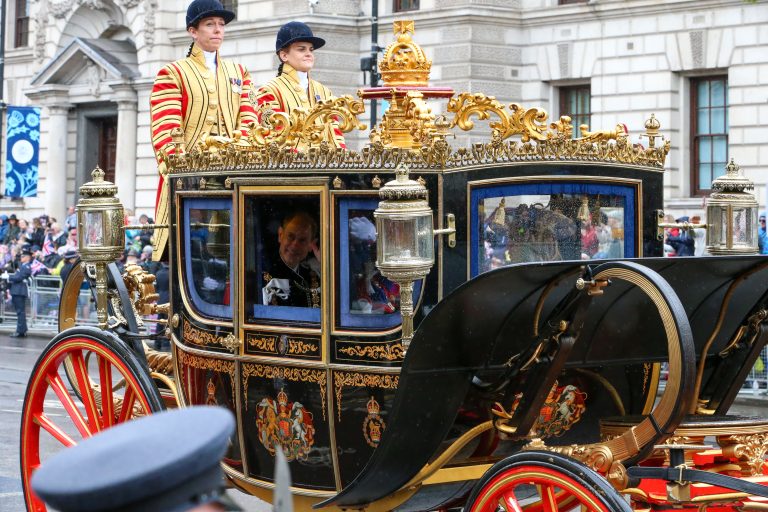
 The Enigmatic Cloughmore Stone Awaits. Embark on an exhaustive journey into the heart of the Cloughmore Stone, affectionately dubbed The Big Stone, a towering 50-ton granite boulder perched 1,000 feet above the charming village of Rostrevor in County Down, Northern Ireland.
The Enigmatic Cloughmore Stone Awaits. Embark on an exhaustive journey into the heart of the Cloughmore Stone, affectionately dubbed The Big Stone, a towering 50-ton granite boulder perched 1,000 feet above the charming village of Rostrevor in County Down, Northern Ireland.
This blog unveils a treasure trove of Cloughmore stone history, weaves through its captivating myths, and guides you through the invigorating Cloughmore stone hike.
Nestled within the verdant embrace of Kilbroney Forest Park, this geological wonder has captivated visitors and locals in Cloughmore Ireland for centuries, blending natural splendor with a rich tapestry of folklore.
Whether you’re a folklore enthusiast, an avid hiker, or a curious traveler, this blog offers an immersive dive into the world of The Big Stone, often likened to the iconic Husafell Stone of Iceland for its cultural and physical significance.
Historical Foundations: The Stone’s Ancient Legacy
The Cloughmore Stone’s Cloughmore stone history dates back approximately 10,000 years to the waning days of the last Ice Age. Scientific consensus holds that it was carried by glacial forces from the rugged Mourne Mountains, deposited on its lofty perch as the ice receded.
This massive granite boulder, roughly 30 feet in circumference, stands as a silent witness to geological epochs, its weathered surface telling a story of endurance.
Situated in Kilbroney Forest Park, once the estate of General Robert Ross—a hero of the Napoleonic Wars—and later a retreat for the Bowes-Lyon family, including a young Queen Elizabeth II, the stone’s historical context is as compelling as its natural presence.
Long before modern records, the stone served as a landmark for early settlers in Cloughmore Ireland. Archaeological evidence suggests it may have been a gathering point for Celtic tribes, its imposing form inspiring rituals and tales that have evolved over millennia.
This blend of natural and cultural history makes it a focal point for both scholars and storytellers.
The Cloughmore Stone Myth: A Rich Tapestry of Legends
The Giant’s Duel: Finn McCool’s Legendary Feat
What is the Cloughmore Stone Myth?
The most celebrated legend revolves around Finn McCool, the towering figure of Irish Celtic mythology. This tale recounts a titanic duel across Carlingford Lough with a Scottish giant.
In a fit of rage, Finn uprooted The Big Stone from the Mourne Mountains and hurled it toward his foe, but it fell short, landing on its current hilltop throne.
The Scottish giant retaliated, his missed throw forming the Isle of Man, while another errant toss created the vast Lough Neagh. Locals believe circling the stone seven times on the Cloughmore stone walk grants good luck—a tradition upheld by visitors seeking blessings.
This narrative resonates with Ireland’s giant lore, akin to the Giant’s Causeway. An 18th-century tale tells of a fisherman who, caught in a tempest, circled the stone seven times, claiming it shielded him from a lightning strike, a story etched into Rostrevor’s oral history.
The Sorceress’s Vengeance: A Haunting Presence
A darker legend speaks of a sorceress scorned by Rostrevor’s elders in the 16th century. Enraged, she cast a spell, placing The Big Stone as a marker of her curse. On moonless nights, her ethereal figure is said to glide around the hill, her cackling laughter a chilling reminder of her wrath. In 1875, a local schoolteacher reported glimpsing her silhouette near the stone during a lunar eclipse, fueling tales of spectral encounters that enrich the Cloughmore stone hike with an eerie allure.
The Lovers’ Tryst: A Heartbreaking Romance
A poignant story from the 17th century involves two young lovers torn apart by a bitter family feud. The maiden, a gifted poet, vowed to meet her beloved at The Big Stone under a full moon, carving their initials into its granite—a mark some claim to faintly discern today. Tragically, she perished in a storm en route, but villagers swear her soft voice recites love poems during calm nights on the Cloughmore stone walk, a romantic echo of lost love.
The Viking’s Trial: A Test of Might
Evoking the Husafell Stone tradition, a Viking-inspired saga suggests Norse invaders in the 9th century used The Big Stone as a strength test. A warrior, said to be the strongest of his clan, lifted it to claim leadership, though others failed, leaving it as a symbol of prowess. In 1920, a local strongman attempted the feat during a village fair, collapsing under its weight but earning a hero’s tale, a story retold during the Cloughmore stone hike by guides.
The Druid’s Altar: A Sacred Site
Another tale posits that ancient Druids revered The Big Stone as a sacred altar, conducting solstice ceremonies beneath its shadow. A 19th-century archaeologist uncovered charred remains nearby, suggesting ritual use, though unconfirmed. Locals weave this into stories of midnight chants heard during summer solstices, adding a mystical layer to the Cloughmore stone walk experience.
The Cloughmore Stone Hike: A Path to Adventure
The Cloughmore stone hike is a beloved pursuit, offering a rewarding climb with breathtaking rewards. The trail begins at the lower car park in Kilbroney Forest Park, spanning 1.5 miles round-trip, with an uphill trek of 25-30 minutes and a downhill return of 15-20 minutes. From the upper car park, it’s a brisk 10-15 minute ascent. The Cloughmore stone map, available at the visitor center or online, details the route with clear signposts.
The journey starts with a gentle ascent through ancient woodlands, escalating to a steeper incline as you near the stone. Highlights include the Fairy Glen’s babbling streams and Kodak Corner’s panoramic views of Carlingford Lough. The final approach is a rugged path to The Big Stone, where the Mourne Mountains’ grandeur unfolds. Hikers often share sightings of red deer or the rare call of a peregrine falcon, enriching the Cloughmore stone walk.
Practical Details: Planning Your Visit
Cloughmore Stone Opening Times: Accessible during Kilbroney Forest Park’s hours: 9 AM daily, with closures at 5 PM (November-March), 7 PM (April and October), 9 PM (May), and 10 PM (June-September 2025), weather permitting.
Cloughmore Stone Map: Provided at the park’s visitor center or downloadable, the map guides the Cloughmore stone walk with safety notes and alternate routes. Parking is free at the lower car park, with a £5 daily fee at the upper car park.
Preparation Advice: Wear sturdy footwear, carry water, and monitor weather conditions, as the trail can be slick after rain. It’s moderately challenging, suitable for most, but supervision is advised for children and pets.
Cultural Importance and Contemporary Appeal
The Cloughmore Stone is a cultural cornerstone in Cloughmore Ireland, embodying resilience and mystery. Its likeness to the Husafell Stone, a 186kg Icelandic lifting stone, underscores its role as a natural challenge.
The Rostrevor Festival features storytelling events about The Big Stone, attracting visitors. Its integration into Kilbroney Forest Park, alongside attractions like the Narnia Trail, cements its status as a blend of heritage and outdoor recreation.
Visitor Tales and Personal Encounters
Visitors often recount unforgettable moments. A hiker from Dublin described reaching The Big Stone at dawn in 2024, feeling a “timeless connection” as the myths swirled in his mind. A family in 2023 turned the Cloughmore stone hike into a game, searching for the “giant’s rock,” their laughter echoing through the hills. These stories highlight the stone’s ability to inspire, making each Cloughmore stone walk a personal legend.
Conclusion: Embrace the Timeless Allure of The Big Stone
The Cloughmore Stone stands as a monument to nature’s might and Ireland’s vibrant storytelling heritage. From Finn McCool’s epic throw to the haunting whispers of a cursed sorceress, its myths transform the Cloughmore stone walk into a journey through time.
Whether you’re captivated by the Cloughmore stone history, the thrill of the Cloughmore stone hike, or the guidance of the Cloughmore stone map, this landmark offers a profound experience. Plan your visit to Cloughmore Ireland, note the Cloughmore stone opening times, and step into the legend of The Big Stone—a tale that continues to enchant.



